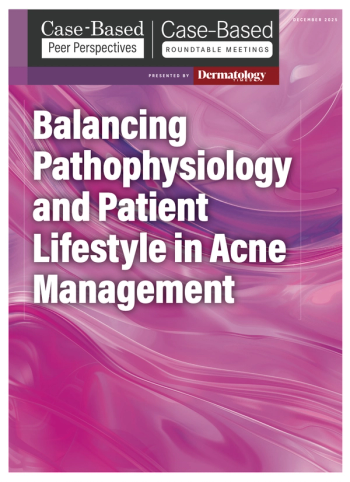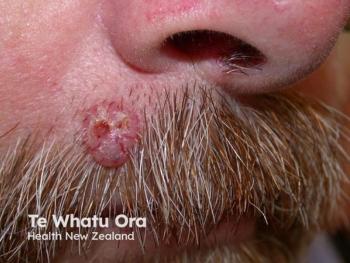
Comprehensive Safety Measures Reduce Risk in Periocular Laser Treatments
Key Takeaways
- Expert consensus outlines safety protocols for periocular laser procedures, emphasizing preoperative screening, intraoperative safeguards, and postoperative monitoring to prevent ocular complications.
- Mandatory use of stainless steel ocular shields and preservative-free numbing drops are critical intraoperative measures to protect ocular health during laser treatments.
Rigorous pre-, intra-, and postoperative protocols help ensure safe, effective periocular laser treatments and reduce the risk of ocular complications.
Laser procedures near the eyes can achieve significant aesthetic outcomes,1 but without rigorous safety protocols, the risk to ocular health is substantial.2 A new expert consensus published in the Journal of Cosmetic Dermatology outlined detailed safety recommendations for clinicians working with lasers in the periocular region.3
Drawing on the expertise of dermatologic laser surgeons and ophthalmologists, the report provides a comprehensive roadmap for minimizing serious complications such as corneal burns, ectropion, dry eye, infection, and even vision loss.
Background and Methods
While non-ablative fractional lasers, bipolar radiofrequencies, and intense pulsed light treatments have demonstrated significant improves in skin elasticity and reduced wrinkle depth,1 a 2023 literature review published in BMC Ophthalmology highlighted severe ocular and periocular complications that can result from dermatologic laser procedures, particularly when proper eye protection is not used.2
To address an absence of standardized safety protocols, authors of the consensus convened a multidisciplinary panel of board-certified dermatologists and ophthalmologists with subspecialties in corneal and oculoplastic surgery.
The panel’s objective was to provide step-by-step clinical guidance that supports periocular laser safety at 3 stages: before, during, and after treatment. Recommendations were developed collaboratively based on clinical experience, peer-reviewed evidence, and consensus discussion.
Consensus Highlights
Preoperative Protocols
Thorough preoperative screening forms the foundation of ocular safety, according to the consensus. In addition to reviewing systemic medical histories (including hypertension, diabetes, and glaucoma), clinicians should assess specific ocular conditions that may contraindicate shield placement or laser use.
A targeted physical exam should evaluate for eyelid laxity, dry eye, ptosis, and prior periocular surgical history. Tools like the Schirmer test and lid margin measurements can inform risk assessment. In patients with severe anatomical concerns, a preoperative ophthalmology consult is advised.
Allergies to topical anesthetics, eye drops, or metals used in eye shields must also be screened. The authors stress that written and verbal consent should explicitly address the potential for ocular injury, including vision loss, and that patients must receive detailed postoperative instructions, including when to seek urgent care.
To streamline and standardize safety checks, the panel recommends a tailored preoperative checklist that includes equipment setup, shield sizing, patient education, and post-care planning.
Intraoperative Safeguards
The authors stated unanimously that stainless steel ocular shields are mandatory for all laser procedures within the orbital rim. These shields must be appropriately sized, sterilized, and lubricated before insertion.
Surgeons should administer preservative-free numbing drops such as tetracaine and ensure ample application of sterile lubricant gel to minimize corneal contact irritation. The shield must be gently inserted while the patient looks downward, and its position should be monitored throughout the procedure.
Head stabilization, proper draping, and use of cooling devices are essential for thermal regulation and minimizing the risk of inadvertent laser contact. All staff in the treatment room must wear wavelength-specific laser eye protection, and the device should remain in standby mode until all safety checks are confirmed.
If the patient experiences sudden eye pain or visual changes during the procedure, treatment should halt immediately and shield removal followed by visual reassessment must occur.
Postoperative Monitoring
Follow-up within 24 hours of treatment is critical for identifying and managing ocular symptoms early. Patients should be instructed to use preservative-free artificial tears and sterile ophthalmic gels to soothe postoperative dryness and support healing, according to experts. Pure petroleum jelly can be used for skin barrier support, provided it contains no additives.
Written discharge instructions should emphasize signs of infection or ocular injury and include 24/7 contact information for the clinical team.
Conclusions and Future Directions
Periocular laser procedures require heightened vigilance to protect ocular structures while achieving aesthetic goals, according to the expert panel consensus.
"Adherence to these precautions ensures the highest standard of care and minimizes the risk of complications, allowing for safe and successful outcomes," wrote authors Kesty et al.
References
- Kołodziejczak A, Rotsztejn H. Efficacy of fractional laser, radiofrequency and IPL rejuvenation of periorbital region. Lasers Med Sci. 2022;37(2):895-903.
doi:10.1007/s10103-021-03329-7 - Bonińska K. Dermatologic laser-induced ocular and periocular complications: a review. BMC Ophthalmol. 2023;23(1):419. Published 2023 Oct 19.
doi:10.1186/s12886-023-03159-x - Kesty K, Kesty C, Benson J, Kesty K, Kesty C. Expert consensus on ocular safety during laser procedures: A practical guide to eye safety by a panel of dermatologist laser surgeons and ophthalmologists. J Cosmet Dermatol. Published online July 10, 2025.
doi:10.1111/jocd.70339
Newsletter
Like what you’re reading? Subscribe to Dermatology Times for weekly updates on therapies, innovations, and real-world practice tips.


















